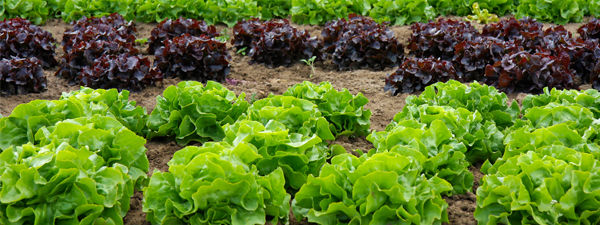Controlling Pests in Year-Round Crop Operations
January 13, 2023

As the owner of Topflavor Farms, Steve Alameda grows crops year-round in the sandy soils of Bard, California, a short distance from the U.S.–Mexico border. The 3,000-acre, family-owned and -operated, irrigated crop operation sits just a few miles across the Colorado River from Yuma, Arizona.
Because Alameda spends nearly 365 days a year planting and harvesting crops, this smart, forward-thinking grower must always wear his game face to produce and deliver more than 20 crops annually to market. Farming in this arid region means facing sweltering summer temperatures of 115 degrees or higher during the summer months, with as little as 3 inches of rainfall annually.
Alameda grows durum wheat, Pima and upland cotton, alfalfa, sudangrass and watermelons. Yet his largest crop is high-value winter vegetables, including iceberg and romaine lettuces, broccoli, cauliflower, mixed lettuces, cilantro, fennel, baby spinach and bok choy. Vegetables grown by producers in the region account for about 90 percent of the nation’s vegetable supply during the winter months.
Most vegetables are planted from late August through January and harvested from mid-November through March. “This is the big leagues in vegetable production,” Alameda says. “It’s very intense work.”
High Heat Equals High Pest Threats
Farming year-round generates many pest concerns, a challenge that Alameda knows all too well. In vegetables, the most common pest threats are whitefly, aphid (foxglove, green peach and lettuce aphids) and lepidopteran (beet armyworm, cabbage budworm and bollworm). In this warmer environment, insects grow extremely fast, and pest management is essential. Alameda explains, “Due to the intense summer heat, pest outbreaks can be extreme.”
Thirty-year pest control adviser veteran Bill Fox of Seven Ag Consulting agrees. As a member of the Alameda team, he provides the grower with experience, input, advice and recommendations for controlling pests – all to help them grow healthy crops successfully and generate high yields. Fox says, “In this area, we plant when insects are at their peak. It’s the nature of the business. You must control insects early, or they will make a mess out of the stand.”
Effective, Timely Pest Control
But growers like Alameda aren't defenseless against pests. “Insecticides available today are very effective on pests in vegetables in this farming region,” he says. “They are targeted sprays and conducive to integrated pest management strategies.”
He and Fox use a variety of crop protection products to keep pests in check on vegetables, including Movento® insecticide from Bayer. Movento is a two-way systemic foliar insecticide, providing broad-spectrum control for a range of sucking pests, including whiteflies, psyllids and aphids. Movento moves throughout the plant to provide all-over protection, even deep inside the leaves where pests can hide.
“Insecticides work well here on pests in vegetables,” Fox says. “The products are safer, target specific pests and are easier to use.”
An important part of the arsenal of solutions lettuce growers are using to combat pests on their crops, Sivanto™ Prime insecticide precisely targets key damaging pests, such as aphids and whiteflies, allowing for a cleaner, more marketable crop. Sivanto offers flexible application methods and timing and is compatible with a broad range of beneficial insects.
While the challenges are many, Fox enjoys the “action and intensity” of the winter vegetable season. “I take it very seriously,” he says. “I like guarding ‘Fort Knox’ for these guys.”